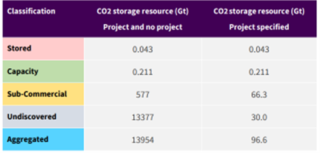-
CO2 storage sites in Asia are predicted to be amongst the cheapest globally
Date posted:
-
-
-
Post Author
Greg Kelsall
-

Suitable storage regions of the world based on the GCCSI storage assessment database
CO2 storage sites in Asia are expected to be amongst the cheapest globally, which could give the region an advantage as the world moves towards net zero emissions. Drilling and well services are also relatively cheap in Asia compared with other regions. Together, this would help make carbon storage projects in Asia more competitive economically, according to the consultancy, Rystad Energy. Crucially, more than 85% of the identified storage for CO2 in Asia is identified as either in onshore basins or the relatively shallow shelf region, rather than in deeper water locations.
The region’s oil and gas industry has several decades of experience that has provided operators with enough knowledge and data to identify low risk reservoirs where CO2 can be stored. “Detailed analysis already exists in the form of seismic surveys and geophysical surveys. In short, this lowers the cost of storage as they do not need to carry out detailed pre-feasibility surveys” said said Sohini Chatterjee, a CCUS and global upstream analyst at consultancy Rystad Energy.
As noted previously by the International CCS Knowledge Centre, the first regional offshore CCUS hub projects are emerging in Malaysia and Indonesia, although the legal and regulatory frameworks are still being developed. The proposed hubs have the potential to store CO2 emissions from gas processing, power stations, and other emitting sectors, as well as from other countries in Southeast Asia and the broader Asia Pacific region. According to Exxon Mobil estimates, S E Asia alone could provide over 300 Gtonnes of storage capacity. This compares with an overall potential storage resource of almost 14,000 Gtonnes, based on the lastest 2022 global CO2 storage resource catalogue available from the OGCI.

Global CO2 storage potential based on 2022 CO2 storage resource catalogue
The Rystad Energy article also notes that licensing requirements are less stringent and less complicated in Asia compared to more economically developed countries. In more developed regions, such as Europe, different licensing requirements exist for CO2 storage. They are more stringent and require operators to perform extra studies to ensure no carbon leakage will occur. Test wells are also needed before a project can start.
In Asia there are very few policy drivers to incentivise carbon storage projects yet. With the exception of China, there are no penalties for emitting CO2. Indonesia has a plan to implement carbon pricing, but it is expected to be very low at around $2/tCO2 according to the Rystad assessment.
Overall, I find it encouraging that Asia appears to have significant CO2 storage potential. This will be needed as the region’s power and significant industrial base including cement, iron and steel, chemicals and aluminium transition to net zero emissions. There is however, clearly work to be done to turn the potential storage capacity noted above into commercial reality, but the potentially lower cost of storage in the region will be a help!
